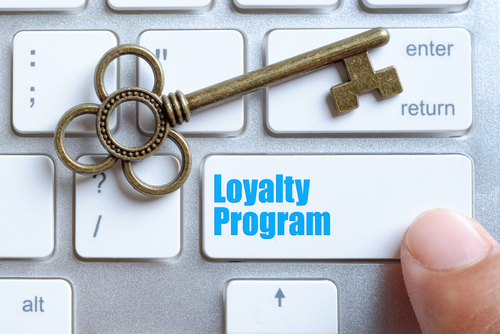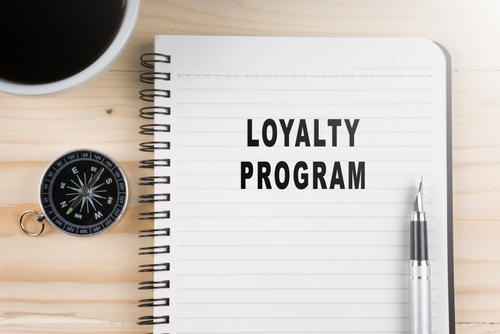Every marketing professional wants to engage their customers and inspire lifelong brand loyalty. But in order to develop marketing campaigns that strike a chord with clients, marketers need to understand the needs, expectations, and predispositions of their target demographics.
One of the most effective strategies for both engaging customers and gaining key insight into their behaviors and expectations is to instate a customer loyalty program. Whether you’re giving away free coffee, points that can be redeemed for prizes or discounts, or other incentives, customers love loyalty programs — and they play a key role in driving both customer satisfaction and brand loyalty.
However, the success of a loyalty program depends not only on its design, but on its execution. This includes safeguarding against accompanying financial risks.
Chief amongst these risks is a phenomenon known as loyalty program liability, or the cost incurred by companies once all outstanding rewards points have been redeemed.
If correctly anticipated, companies can defer the necessary amount of revenue required to absorb the incoming liability without sustaining any financial injury. To do so, however, they must first know two things: the cost of redeeming each outstanding point, and the percentage of outstanding points that will ultimately be redeemed.
What do marketers need to know about loyalty program liability, and what metrics should they focus on in order to best understand the financial risks (or rewards) facing their company? Read on to learn more!
A brief overview of loyalty program liability

The simplest way to uncover the cost of your company’s loyalty program liability is to use the following formula:
Total Number of Outstanding Points x URR x CPP
URR, or ultimate redemption rate, refers to the percentage of outstanding points (or whatever other form of currency your company disperses to loyalty program members) that will eventually be redeemed. The cost per point, or CPP, is the cost the company incurs during the redemption of each point.
Once you’ve figured out the values for both of these indices, you can unearth you company’s loyalty program liability by multiplying the total number of outstanding points by the URR and multiplying the resulting amount by the CPP.
Revenue should be deferred upfront

So, when should companies concern themselves with the financial impact of these points? Though it may seem counterintuitive, domestic and international regulations prescribe that revenue used to satisfy obligations to program members be deferred at the moment of issuance — not at the point of redemption.
This need to defer revenue can lead to three potential scenarios. The first is that not enough revenue is deferred, culminating in your company being forced to restate its income levels. The second scenario is that your company defers too much revenue, leading to a phenomenon known as, “stuck revenue.”
The third, and ideal, scenario at which companies can arrive is one in which just the right amount of revenue has been deferred.
Knowing how much revenue to defer is critical to contending against loyalty program liability, and can be best accomplished by using granular-level measurements that capture the future actions of individual members. After all, acquiring correct estimates for URR is entirely hinged upon knowing the way customers will behave in the future.
Without salient URR or breakage estimates, your company will not be able to generate an accurate forecast of its upcoming liability, and won’t be able to defer the corresponding portion of its revenue.
By crafting loyalty programs that incentivize customers to make purchases with company cards or other devices that monitor spending patterns, marketers can cultivate an abundance of harvestable data. In this respect, marketers can shine, because this data allows their company’s finance and accounting teams to better predict the behaviors of individual customers.
Though extracting insights from such large swaths of information may seem like a monumental challenge, the good news is that recent developments in the field of predictive analytics and artificial intelligence have made unlocking the secrets submerged within Big Data a reality.
Loyalty programs are advantageous for finance, too

Without question, loyalty programs are tremendously helpful for marketers. They provide concrete incentives for customers to continue engaging with a company, and give the marketing team a renewed series of opportunities to keep clients abreast of emerging offers.
Moreover, they produce data that allows marketing to calculate the customer lifetime value (CLV) of individual members. CLV denotes how much free cash flow a particular person will generate for the company throughout the course of their time with the company.
By gathering an aggregate of the individual CLVs of loyalty program members, marketing can provide their finance counterparts with a clear window into the financial value of their customer loyalty program.
CLV can also help marketing teams target those customers with the most value. One of the greatest inefficiencies that besets modern companies is the amount of money that's wasted on failed attempts to engage disinterested clients. By understanding a member’s cumulative lifetime value, you can know whether the return generated from their engagement justifies the cost of engaging them.
The company can then reinvest the money saved from not targeting less lucrative members to drive up the frequency of purchases made by their most engaged members. Thus, a strong CLV estimate may just lead to the conservation and expansion of company revenue.
Simply stated, well-designed loyalty programs drive up sales and increase a company’s bottom line, making them an invaluable strategy for marketing and finance departments alike.
The bottom line
Loyalty program marketers have a tremendous opportunity to increase brand loyalty while helping drive company revenue. Not only do they have detailed insight into their members, but they can provide critical information to finance about loyalty program liability, helping their company optimize its customer engagement strategy.
Loyalty program liability can be combated using precise estimates of user behavior drawn from granular-level information. This information will give your company the data it needs to construct an accurate model of its program liability, and draw the insights needed to generate a real return on its loyalty program investment.





